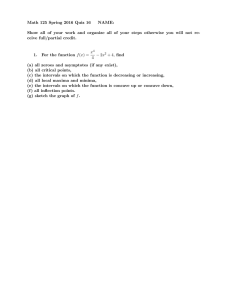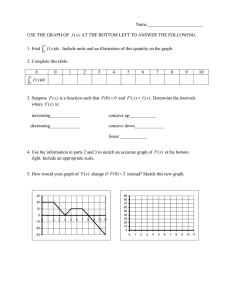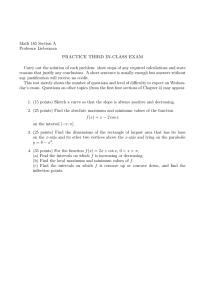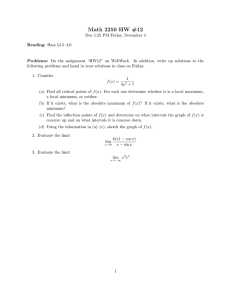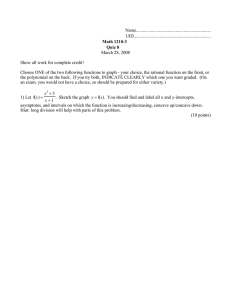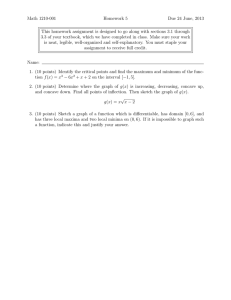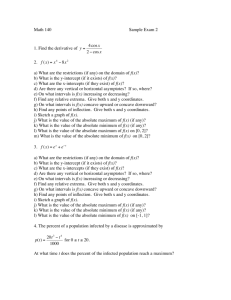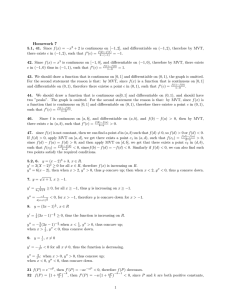Name: Mods: Date:
advertisement
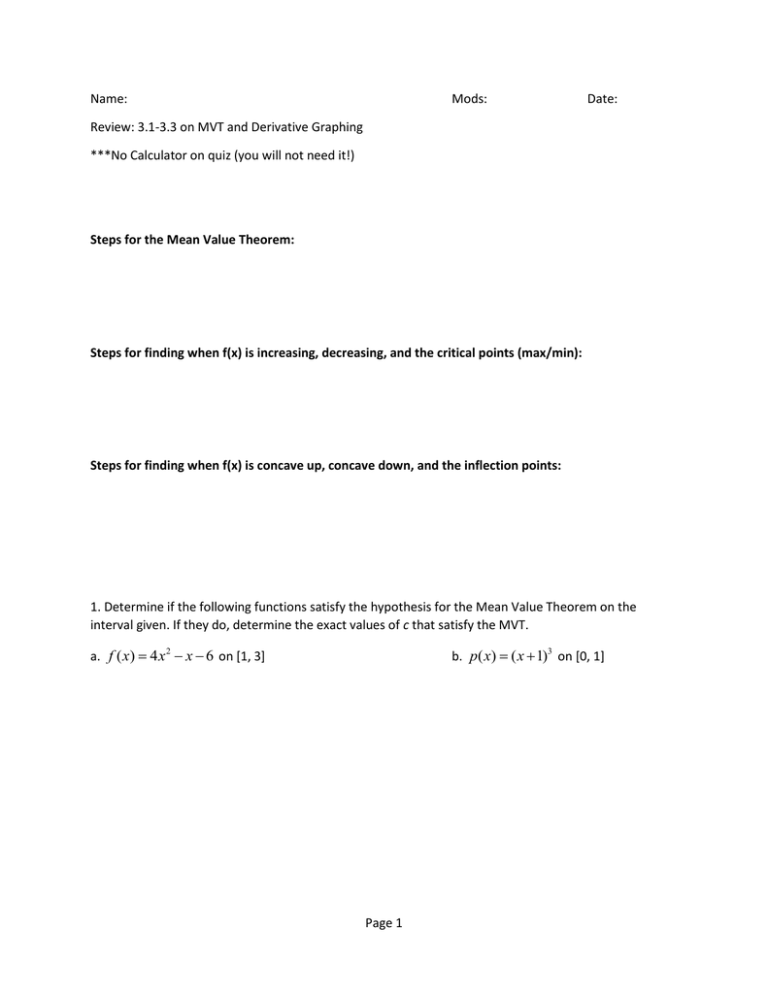
Name: Mods: Date: Review: 3.1-3.3 on MVT and Derivative Graphing ***No Calculator on quiz (you will not need it!) Steps for the Mean Value Theorem: Steps for finding when f(x) is increasing, decreasing, and the critical points (max/min): Steps for finding when f(x) is concave up, concave down, and the inflection points: 1. Determine if the following functions satisfy the hypothesis for the Mean Value Theorem on the interval given. If they do, determine the exact values of c that satisfy the MVT. a. f ( x) 4 x 2 x 6 on [1, 3] b. p( x) ( x 1)3 on [0, 1] Page 1 d. h( x) 2 x 1 on [1, 5] c. g ( x) x3 on [1, 3] 2. Find the critical points for each of the following functions, then determine where they are increasing and decreasing, and classify all extreme values (max’s and min’s). a. f ( x) 3x 2 5 x 1 b. h( x) x 4 2 x 2 3 c. f ( x) ( x 3)2 ( x 1) Page 2 3. Determine the intervals where the following functions are concave up or down, and find any inflection points. a. g ( x) x3 5 x b. h( x) (3x 2)3 *c. f '( x) x 2 3x 4 Page 3 4. Sketch the graph of a function that satesfies the following characteristics. a. 5. b. 𝑓(𝑥) < 0 𝑜𝑛 (3, ∞), 𝑓(𝑥) < 0 𝑜𝑛 (−∞, 3), 𝑓 ′ (𝑥) > 0 𝑜𝑛 (−∞, 2) ∪ (2, ∞), 𝑓 ′′ (𝑥) < 0 𝑜𝑛 (−∞, 2), and 𝑓 ′′ (𝑥) > 0 𝑜𝑛 (2, ∞) . For each of the following functions, find the zeros, y-intercept, coordinates of local extrema, intervals where the function increases and/or decreases, coordinates of inflection points, intervals where the function is concave up and/or down, and then sketch the graph. a. 𝑓(𝑥) = 𝑥 4 + 4𝑥 b. 𝑓(𝑥) = (𝑥 − 2)(𝑥 + 1)2 Page 4
